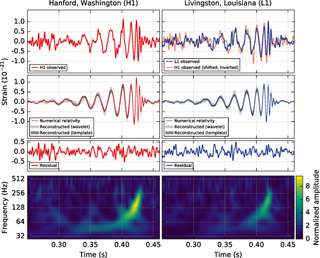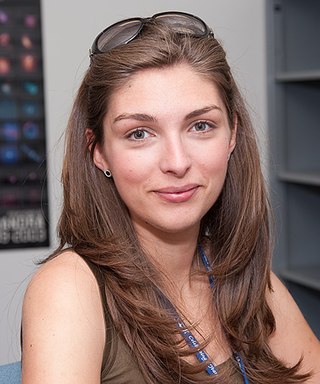Related Research Articles

Astronomy is a natural science that studies celestial objects and phenomena. It uses mathematics, physics, and chemistry in order to explain their origin and evolution. Objects of interest include planets, moons, stars, nebulae, galaxies, meteoroid, asteroid, and comets. Relevant phenomena include supernova explosions, gamma ray bursts, quasars, blazars, pulsars, and cosmic microwave background radiation. More generally, astronomy studies everything that originates beyond Earth's atmosphere. Cosmology is a branch of astronomy that studies the universe as a whole.

Edinburg is a city in and the county seat of Hidalgo County, Texas, United States. Its population was 74,569 as of the 2010 census, and in 2019, its estimated population was 101,170, making it the second-largest city in Hidalgo County, and the third-largest city in the larger Rio Grande Valley region.

The University of Texas System is a Public university system in the U.S. state of Texas. It includes nine universities and five independent health institutions. The UT System is headquartered in Downtown Austin. Its total enrollment of nearly 240,000 students is the largest university system in Texas. It employs 21,000 faculty and more than 83,000 health care professionals, researchers and support staff. The UT System's $30 billion endowment is the largest of any public university system in the United States.

The Laser Interferometer Space Antenna (LISA) is a proposed space probe to detect and accurately measure gravitational waves—tiny ripples in the fabric of spacetime—from astronomical sources. LISA would be the first dedicated space-based gravitational-wave observatory. It aims to measure gravitational waves directly by using laser interferometry. The LISA concept has a constellation of three spacecraft arranged in an equilateral triangle with sides 2.5 million kilometres long, flying along an Earth-like heliocentric orbit. The distance between the satellites is precisely monitored to detect a passing gravitational wave.
Texas Southmost College (TSC) is a public junior college located in Brownsville, Texas.

The Max Planck Institute for Gravitational Physics is a Max Planck Institute whose research is aimed at investigating Einstein's theory of relativity and beyond: Mathematics, quantum gravity, astrophysical relativity, and gravitational-wave astronomy. The institute was founded in 1995 and is located in the Potsdam Science Park in Golm, Potsdam and in Hannover where it closely collaborates with the Leibniz University Hannover. Both the Potsdam and the Hannover parts of the institute are organized in three research departments and host a number of independent research groups.
Richard H. Price is an American physicist specializing in general relativity.

Astrosat is India's first dedicated multi-wavelength space telescope. It was launched on a PSLV-XL on 28 September 2015. With the success of this satellite, ISRO has proposed launching AstroSat-2 as a successor for Astrosat.

Gravitational-wave astronomy is an emerging field of science, concerning the observations of gravitational waves to collect relatively unique data and make inferences about objects such as neutron stars and black holes, events such as supernovae, and processes including those of the early universe shortly after the Big Bang.
The Center for Computational Relativity and Gravitation (CCRG) is a research center of the College of Science (COS) and a Research Center of Excellence at Rochester Institute of Technology (RIT) dedicated to research at the frontiers of numerical relativity and relativistic astrophysics, gravitational-wave physics, its connection to experiments and observations, and high-performance computation and scientific visualization.
CGWA may refer to:
The College of Science, Mathematics, and Technology was the science college of the former (1992-2015) University of Texas at Brownsville. It consisted of six academic departments. The six departments employ diverse faculty members - many of whom are leading experts in the fields - who have received funding from a variety of funding agencies, including the National Science Foundation, the National Institutes of Health, the Department of Education, and the Department of Defense, among others. The average active ongoing external funding is about 25-30 million dollars. In 2002 the Center for Gravitational Wave Astronomy (CGWA) research center was founded to help "develop excellence in research and education in areas related to gravitational wave astronomy."

The University of Texas Rio Grande Valley (UTRGV) is a public research university with multiple campus throughout the Rio Grande Valley region of Texas and is the southernmost member of the University of Texas System. The University of Texas Rio Grande Valley (UTRGV) was created by the Texas Legislature in 2013 after the consolidation of the University of Texas at Brownsville/Texas Southmost College and the University of Texas–Pan American.

The University of Texas at Brownsville was an educational institution located in Brownsville, Texas. The university was on the land once occupied by Fort Brown. It was a member of the University of Texas System. The institution was formed from a 1991 partnership between the two-year Texas Southmost College and University of Texas-Pan American at Brownsville. The partnership ended in 2011 as UTB became a standalone University of Texas institution, and Texas Southmost College returned to being an independent community college. UTB itself offered baccalaureate and graduate degrees in liberal arts, sciences, education, business, and professional programs.
STARGATE—Spacecraft Tracking and Astronomical Research into Gigahertz Astrophysical Transient Emission—is a radio-frequency (RF) technology facility under development in south Texas.
UTRGV Fieldhouse is a 2,500-seat multi-purpose arena on the campus of the University of Texas Rio Grande Valley in Edinburg, Texas. It was built in 1969 for one of UTRGV's predecessor institutions, Pan American University, which later became the University of Texas-Pan American (UTPA), and is home to the UTRGV Vaqueros men's and women's basketball teams, as well as the Vaqueros women's volleyball team. The Fieldhouse is also used extensively by the Department of Health and Kinesiology.
PyCBC is an open source software package primarily written in the Python programming language which is designed for use in gravitational-wave astronomy and gravitational-wave data analysis. PyCBC contains modules for signal processing, FFT, matched filtering, gravitational waveform generation, among other tasks common in gravitational-wave data analysis.

John Blangero is an American human geneticist who ranks in the top 3000 researchers in the world in terms of scholarly citations. His research has been highly funded by the National Institutes of Health where he is reported to have obtained more than $64 million in direct funding for genetic studies of common diseases such as cardiovascular disease, diabetes, and psychiatric diseases. He is a professor in the Department of Human Genetics at the University of Texas Rio Grande Valley (UTRGV) School of Medicine in Brownsville, Texas, where he is also Director of the Genomics Computing Center at the South Texas Diabetes and Obesity Institute. In addition, he serves as director of the San Antonio Family Heart Study, and played a major role in organizing the construction of the 11,000-processor computer cluster MEDUSA, which he and his collaborators use for genetic research at UTRGV. Before joining UTRGV, he worked at the Southwest Foundation for Biomedical Research. His research has included a project focused on studying the function and structure of the human brain, for which he collaborated with David Glahn of Yale University. He has also studied the genetic and environmental causes of diabetes and fatty liver disease among the Mexican American population in South Texas.

Eleonora Troja is an Italian astrophysicist. In 2017 she led the discovery of X-ray emission from the gravitational wave source GW170817.
Pegasus is an open-source workflow management system. It provides the necessary abstractions for scientists to create scientific workflows and allows for transparent execution of these workflows on a range of computing platforms including high performance computing clusters, clouds, and national cyberinfrastructure. In Pegasus, workflows are described abstractly as directed acyclic graphs (DAGs) using a provided API for Jupyter Notebooks, Python, R, or Java. During execution, Pegasus translates the constructed abstract workflow into an executable workflow which is executed and managed by HTCondor.
References
- ↑ CGWA mission Retrieved 23 September 2017
- ↑ "Building Bridges", the CGWA inaugural meeting